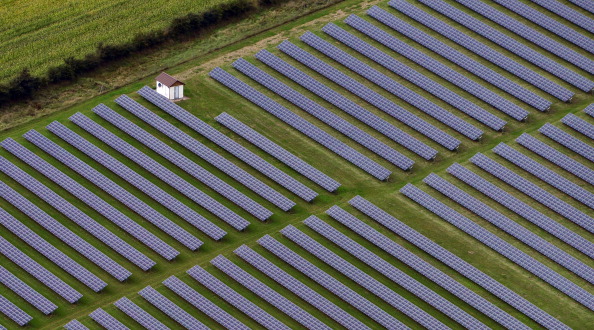It’s no longer, if, but rather when.
In study released in late July 2013, DB’s US-based Vishal Shah estimates that three-quarters of the world’s solar market will be “sustainable” within 18 months, meaning they can operate with little or no subsidy. In 2 years, he reckons, the market will have flipped from one being largely “unsustainable” – needing big subsidies – to one being mostly sustainable. (graph below). Whether the market will indeed flip as Mr. Shah predicts or not, is debatable. Most likely, the flipping will happen gradually, with solar becoming cost-competitive with grid-generated power starting in high retail regions first.
DB’s analysis is based on assumptions about module prices stabilizing at around $US60-70 c/watt, and installation costs of around US$1-1.20/watt, resulting in the levelized solar electricity in the US10-20 c/kWh range.
“We believe the underlying economics of the sector have improved significantly and we may be just at the beginning of the grid parity era,” according to DB, “Low natural gas prices may make large utility scale solar deployments in the US less attractive for now, but we remain bullish about rapid development of utility scale solar in several international markets over the next 3-5 years.”
Despite the contraction in the EU market, at least 1/3rd of new, small to mid-size projects are being developed without subsidies. Multi-megawatt projects were being built south of Rome for €90c/W ($1.20/W), delivering levelized electricity at around €8c/kWh (10 US cents/kWh). Likewise, DB points to unsubsidized large-scale projects in India and the US in the 9-12 US c/kWh range.
DB, like everyone else, however, recognizes that grid parity on its own merits on paper does not necessarily equate to a robust market in practice. Sustainable growth requires sustainable regulatory and pricing policies. The bottom line? “Solar appears to be in the beginning stages of transitioning between ‘alternative energy’ and a truly cost competitive source of energy that may help both producers and consumers hedge against rising electricity rates and fuel costs.”
This theme, and same line of reasoning, finds growing acceptance by the day. An article in the Financial Times (8 Aug 2013), for example, shows the cost of solar generated electricity falling over time in Germany while the cost of grid-supplied electricity continues to rise. This and other factors explain the projected growth of solar PV installations globally.
Moreover, it is not just solar energy, but the same applies to nearly all renewables. Which explains why an increasing number of scholars and academics believe that the electricity sector can gradually shift to a future where most if not all generation is provided from renewable resources.
The table above shows a few examples of major economies planning to rely on renewables for most if not all their electricity generation by 2050. The preceding article shows an example of how it can be done – and apparently not at an exorbitant cost.





